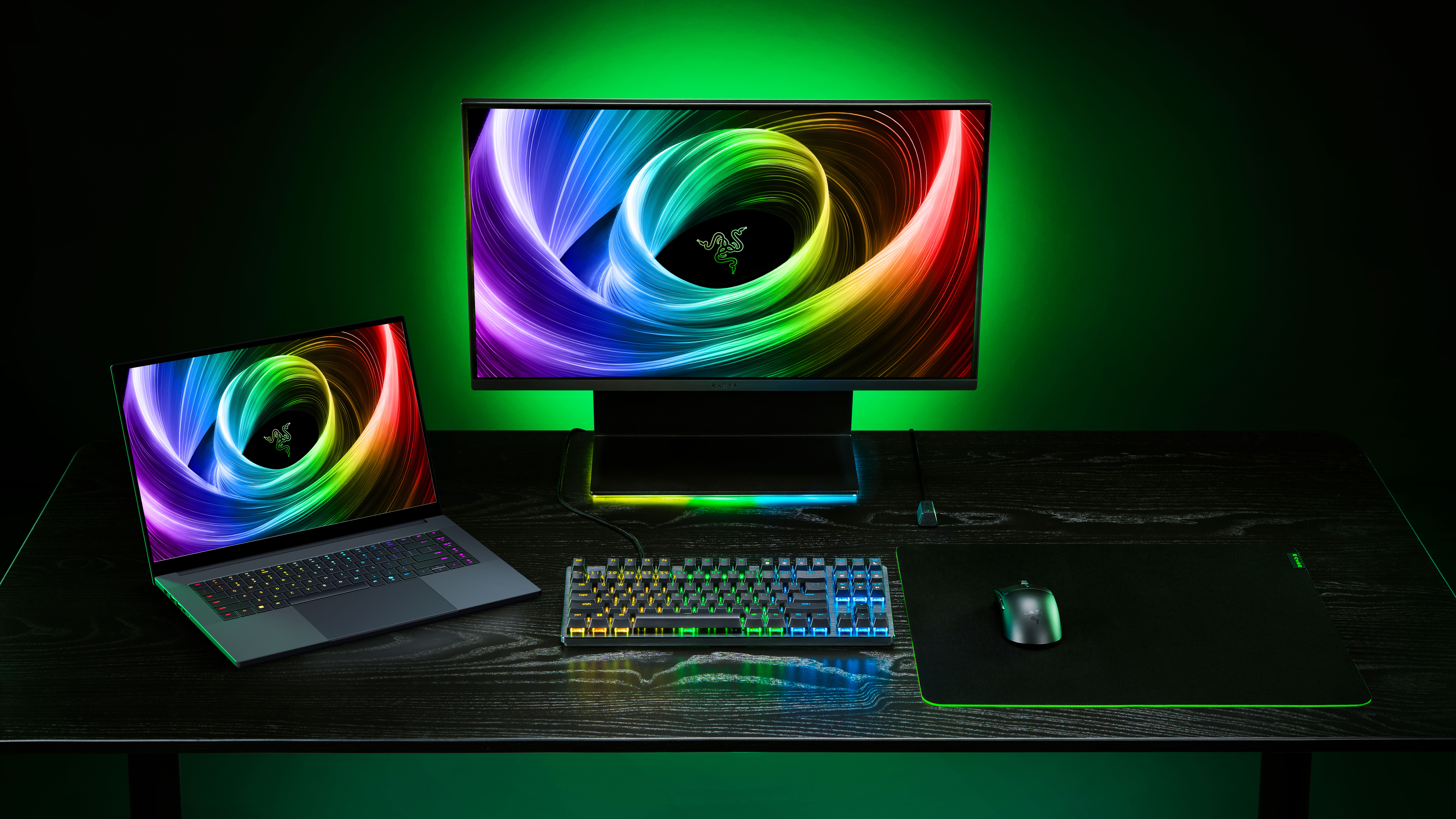
Razer announced its "thinnest, most powerful" gaming laptop, the Blade 16 (2025), on January 6 at CES 2025 in Las Vegas, NV.
Featuring an AMD processor for the first time on the mainstream Blade 16, this gaming laptop also leverages the Nvidia RTX 50-series graphics cards, a deeper keyboard, and a redesigned thermal hood, all to get the laptop chassis to measure just 0.59 inches when closed.
But is the Razer Blade 16 (2025) really the thinnest, most powerful Blade laptop ever? Let's check the facts.
Razer Blade 16 (2025): Specs
Razer Blade 16 (2025): Pricing and availability
Razer has not announced pricing and availability yet, but based on the information we have from Nvidia, we expect the RTX 5090 spec of the Blade 16 to cost upwards of $4,000. The 2024 Razer Blade 16 started at $2,999, so don't look for the thinnest, most powerful Blade 16 laptop on our best gaming laptops under $1,500 page.
Like many gaming laptops with the new Nvidia RTX 50-series graphics cards, the Razer Blade 16 (2025) is expected to ship in March.
Razer Blade 16 (2025): Design

In terms of design aesthetic, the Razer Blade 16 (2025) retains most of the features of previous Blade laptops. It's got a black aluminum chassis with a minimalist, almost Apple-style design. The RGB lighting is still limited to the keyboard backlight, and the Blade 16 is still a very slim, portable gaming powerhouse.
However, Razer claims that the Blade 16 (2025) is its thinnest, most powerful Blade laptop ever. But, there are those of us who still remember the 0.5-inch-thick Razer Blade Stealth (2017), which was absolutely thinner than the Blade 16 (2025), which is 0.59 inches thick.
We'll forgive Razer for the marketing because the Stealth line lacked discrete graphics, which allowed it to be thinner. Additionally, the 2025 Blade 16 is far thinner than its 2024 counterpart, which was 0.87 inches thick. The new Blade 16 is even slimmer than the Apple MacBook Pro 16 (M4 Pro, 2024) at 0.66 inches.
The Blade 16 (2025) features a revamped keyboard with deeper key travel at 1.5mm and the same oversized touchpad as previous Blade models. So, it is a fascinating design challenge to fit all of that into such a slim laptop. And we have to give Razer credit for putting in a deeper keyboard while still shaving almost 0.3 inches off the chassis.
Razer Blade 16 (2025): Ports
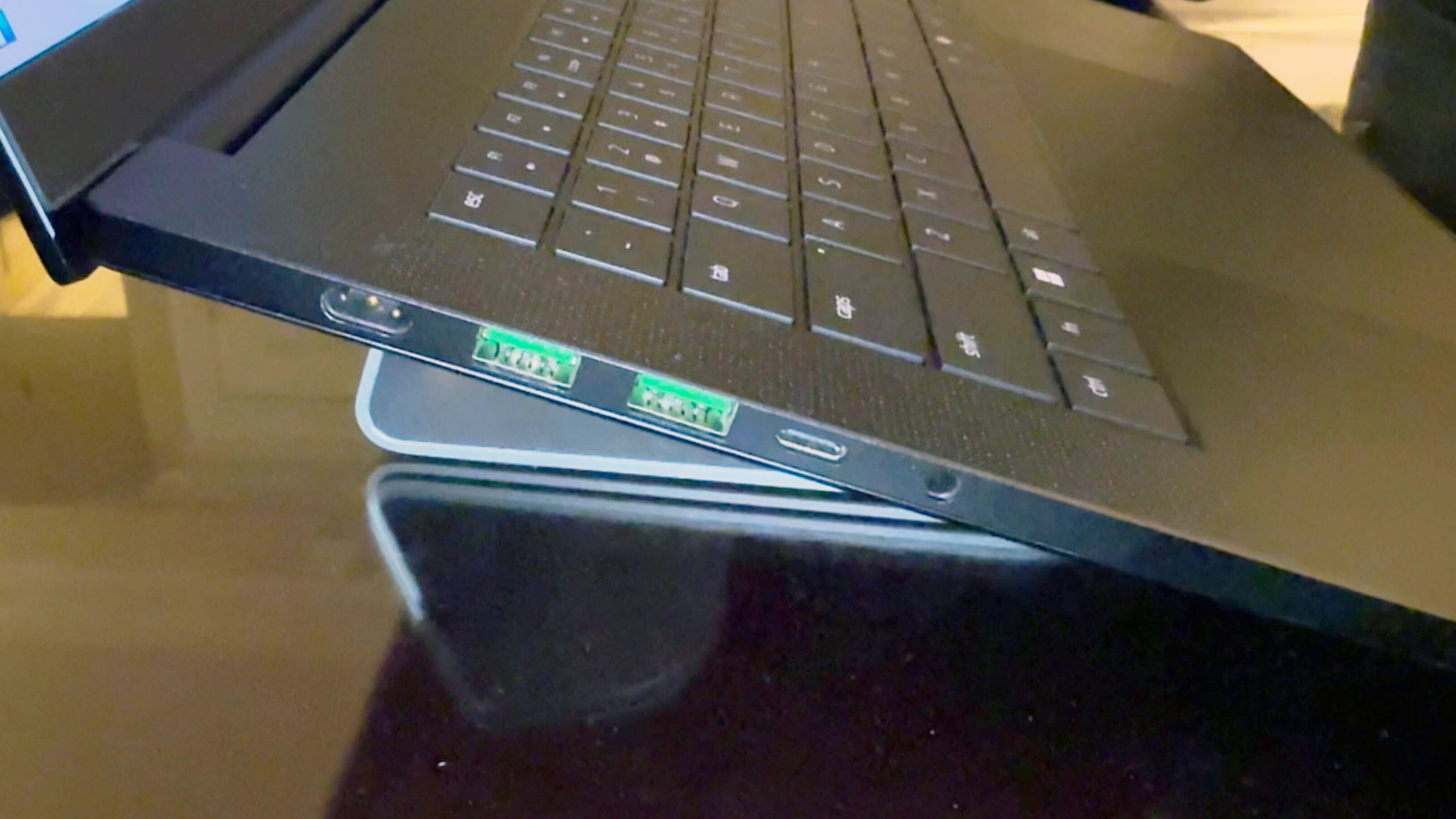
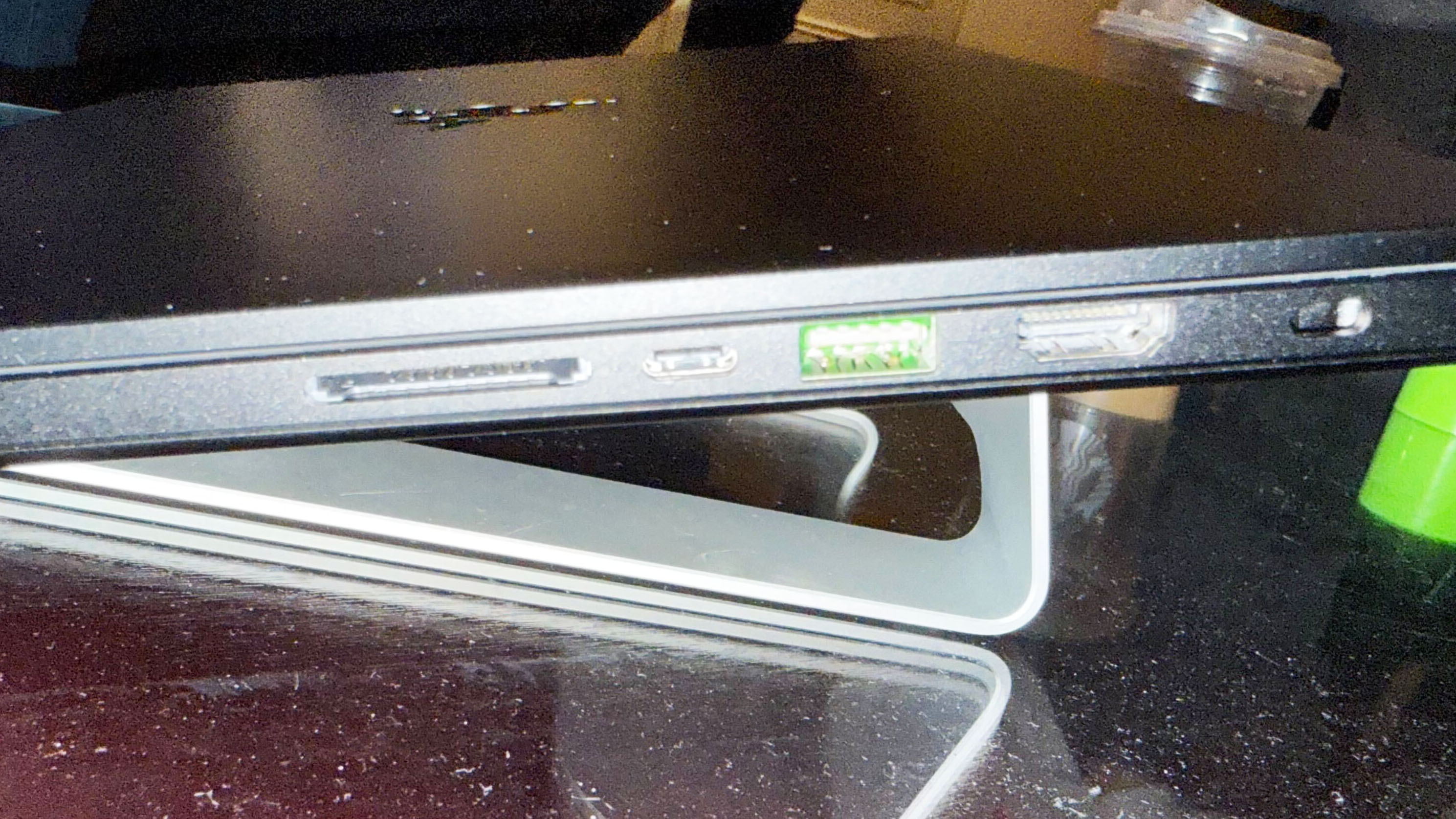
Razer has not released the official port array for the Blade 16 (2025), but based on the models we saw at CES we can put together a general idea of the port array on the new Blade laptop for you. At least one, if not both of those USB Type-C ports should be Thunderbolt 5.
- 1x DC-in
- 1x HDMI 2.1
- 2x USB Type-C
- 3x USB Type-A
- 1x SD card reader
- 1x security lock slot
This should be enough ports for any gamer, allowing you to skip out on the USB-C hub or laptop docking station.
Razer Blade 16 (2025): Display
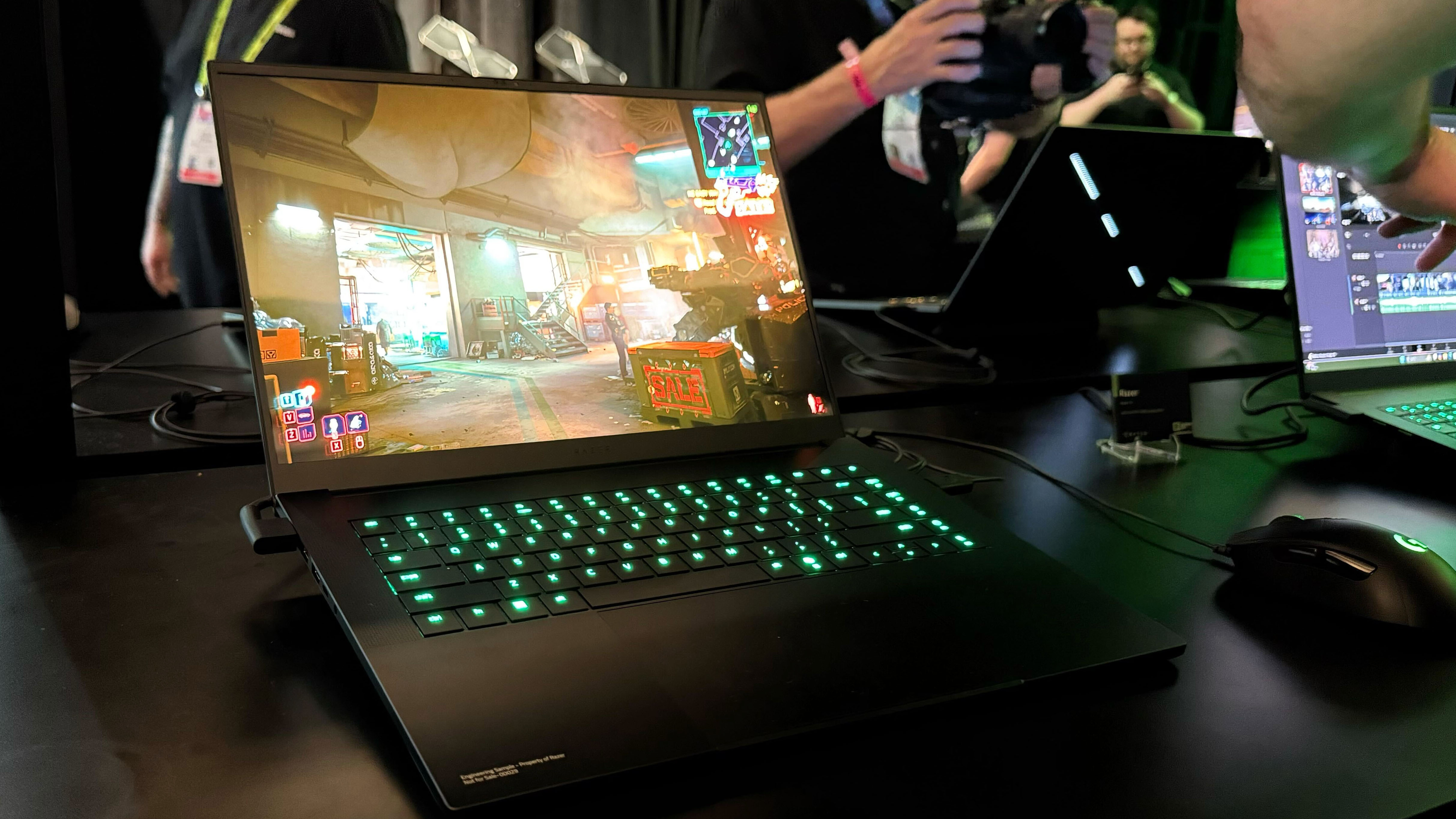
The Razer Blade 16 (2025) has a 16-inch 240Hz (2880 x 1440) OLED display with a response time of just 0.2ms. Razer displays are generally on the good side, and OLED panels offer a solid advantage in terms of color vibrancy.
Older OLED panels used to suffer in terms of brightness, but plenty of modern OLEDs can get a good 300-500 nits, so we're not too worried about a dim display with this panel option.
While I didn't get a chance to see the Blade 16 display in a well-lit environment to test for glare, the OLED panel looked great in low-light in the Razer press suite and the Nvidia press demo area. Playing Cyberpunk 2077 on the Blade 16 (2025) was an absolute treat, as the game has a wide array of colors and lighting effects, and the Blade 16's panel handled the game with ease.
Razer Blade 16 (2025): Performance and heat
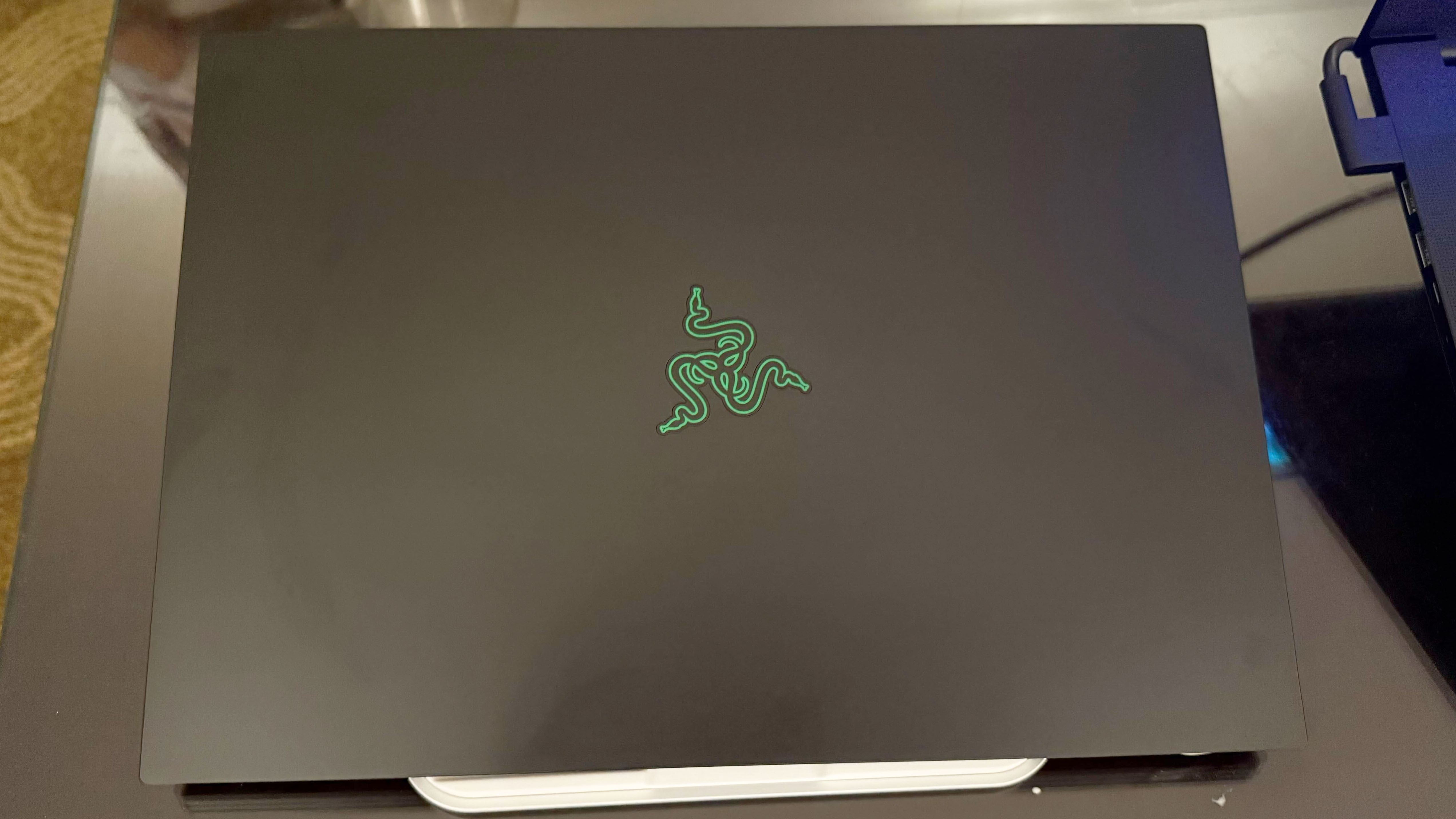
Rather than pairing the Blade 16 (2025) with the brand new "Fire Range" variant of AMD gaming processors, Razer opted for the "Strix Point' Ryzen AI 300 series. This decision likely came down to the chassis redesign for the Blade 16, which required a new cooling system to keep the RTX 50-series GPUs running. So, to offset the cooling requirements of the RTX 5090 GPU, Razer opted for the more power-efficient AI PC chip instead of the gaming processor.
The Ryzen AI 300 series has proven to have solid multicore performance in our testing on various other laptops, including gaming machines like the Asus TUF Gaming A14. So, seeing the AI PC chip here isn't completely out of nowhere.
Razer's redesigned thermal hood for the 2025 Blade 16 is intended to get the most power out of the CPU and GPU possible with a new generation of Razer's patented vapor chamber. Featuring a dual-fan design with 0.05mm exhaust fins, the new vapor chamber covers 57% of the motherboard surface area. This should keep the Blade 16 cool even under sustained stress conditions like gaming or rendering video.
Of course, we'll have to wait to get the Blade 16 into our labs for testing to determine how well Razer has optimized this ultra-slim laptop for performance and heat management.
Razer Blade 16 (2025): Gaming and graphics
While Razer's choice to opt for AMD's AI PC chip instead of the gaming chip could lead to some CPU bottlenecking, Strix is not a gaming processor; the CPU does have high multicore and multi-thread performance, so gaming at the maximum 1440p resolution should help alleviate any issues there.
We do know a bit about how the Nvidia RTX 5080 laptop GPU will handle various games thanks to Nvidia's most recent news drop. However, we don't have confirmed performance benchmarks for the flagship RTX 5090 laptop GPU. But we expect it to offer about 10-30% better performance than the RTX 4090 laptop GPU.
I spent some time playing Cyberpunk 2077 on the Blade 16 at the Nvidia press suite at CES. While the game did have DLSS 4 enabled, it played smoothly and looked pretty great even with the frame-generation software. A representative from Nvidia confirmed that the Blade 16 had performed well with gaming, without any CPU bottlenecks or thermal throttling in their testing.
For a more reliable understanding of gaming performance on the Blade 16 though, we'll have to see how well the laptop handles in our suite of gaming and graphics tests in the Laptop Mag labs.
Razer Blade 16 (2025): What's next?
As always with our hands-on experiences, our final call will have to wait until we've had a lot of dedicated hands-on time with the laptop and have put it through our rigorous testing process.
However, there is plenty of reason to be eyeing the new Blade 16 if you're looking to upgrade your gaming laptop setup this year. The Blade 16 (2025) does have an improved keyboard, a 240Hz OLED display panel, and a new Nvidia RTX GPU up to the 5090 flagship. So, while it may not be the thinnest laptop Razer has ever built, it is the thinnest Blade 16 model we've seen.
While the CPU and GPU combo isn't the most common we'll see with the RTX 50-series, it isn't unheard of, and of all the AI PC chips, AMD's Ryzen AI 300 "Strix Point" is the best choice for a gaming platform. So it shouldn't hurt your performance.
The only real catch is the price tag, which could be upwards of $4,000 at the top end, but even that remains a mystery for now.







